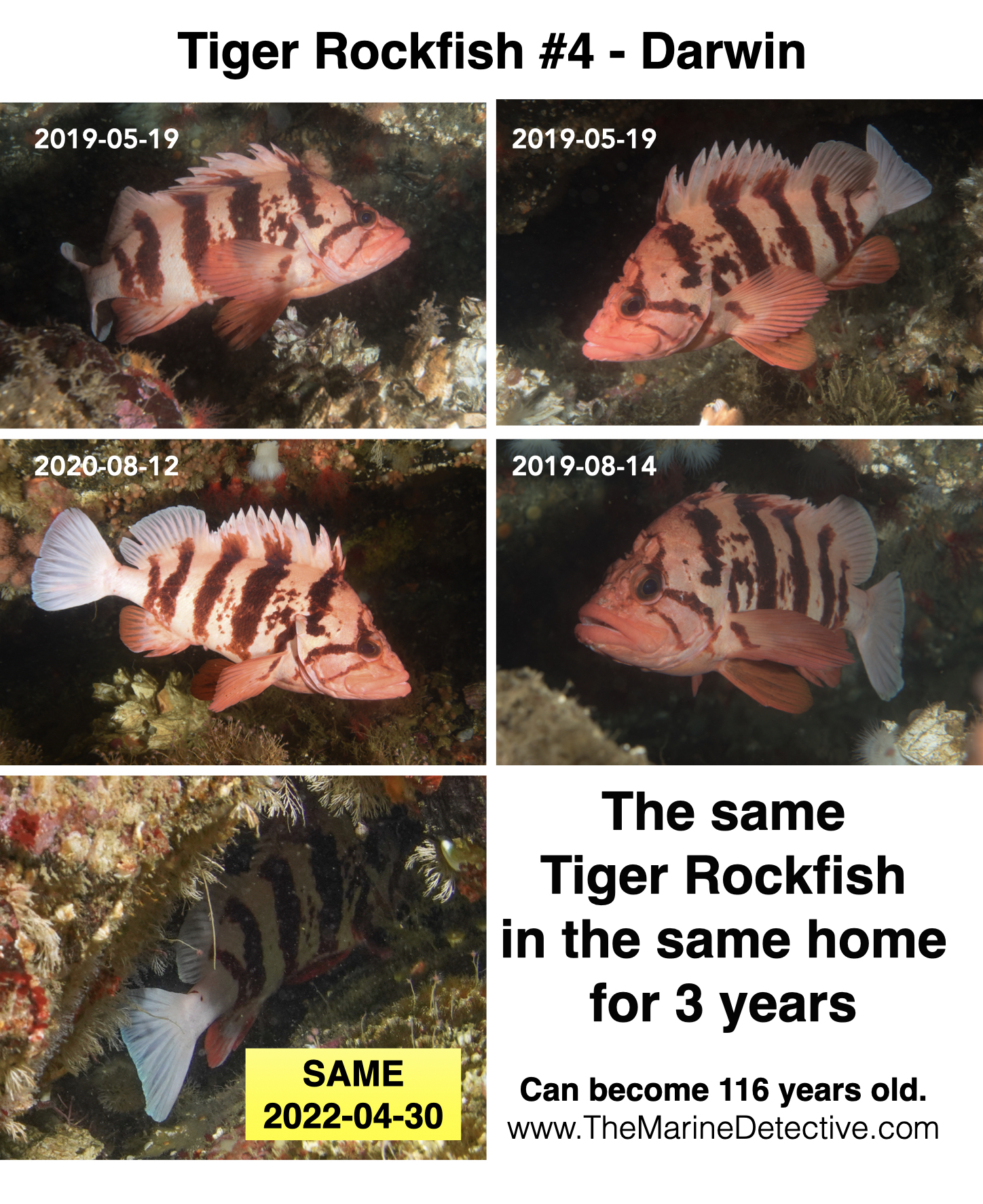Five fish. One Dive.
Here are just five fabulous fish faces from my dive on July 12. These are just the fish who tolerated my taking photos. I am sharing with you to add to the sense of biodiversity hidden in these waters.
Also, I really value what I feel is mirrored back from these fish . . . the “What the hell are YOU and what are you doing here?” It’s good to feel like a visitor in others’ habitat rather than than a human at the epicentre of the universe. It’s below the waves, with the fish, that I best know my place and where I best feel humility. I also feel apology, not just for the disturbance of taking photos but as an ambassador for my species.
Sometimes I think as I look at the life below the surface “I’m trying. Please know, I’m trying”.
Thank you for caring and for trying too.
[Please note that I did not realize when compiling these photos that I have a blog on every species represented here. I suggest that the most insight would be gained from reading this blog first and then accessing the further links I provide here showing video, etc.]
Fish #1
Male Kelp Greenling with a Striped Sunflower Star to his right.
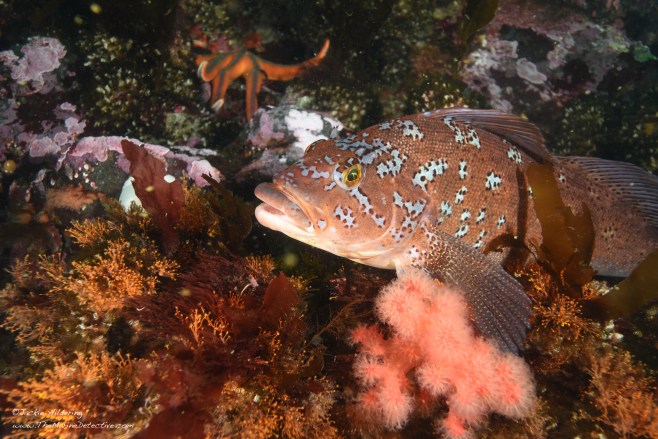
This species seems to so often be chasing one another and they have extraordinary courtship where the males change colour. Males will guard the fertilized eggs.
Video of the courtship is in my blog “Kelp Greenling Colour and Courtship” at this link.
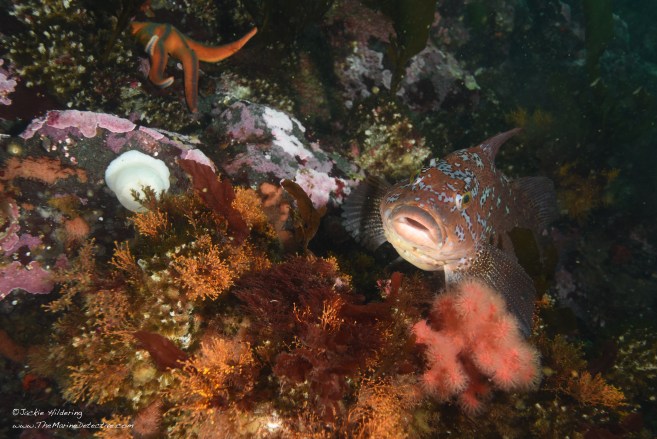
Photo above is another perspective on the same fish. Note that the bright orange life you see here are animals, not plants. They are Orange Hydroids. The soft coral beside the Kelp Greenling’s head is Red Soft Coral.
Fish #2
Quillback Rockfish

Quillbacks, like so many of BC’s 34 rockfish species, have been over-exploited.
Rockfish are slow to mature, and are very localized in where they live. Therefore, they are particularly vulnerable to overfishing.
As divers, we’ve seen how Rockfish Conservation Areas can make a real difference for the number, diversity and size of rockfish.
There is no egg-guarding in this species because the young develop inside the females and are born into the water i.e. they are viviparous.
Please see my previous blog “Rockfish Barotrauma” at this link on the importance of Rockfish Conservation Areas and also on how to reverse what happens to rockfish when they are brought up from depth i.e. how to easily reverse barotrauma.
Quillback Rockfish = Sebastes maliger to 61 cm.
Fish Face #3
Lingcod

Lingcod males also guard the fertilized eggs. They are extraordinary large masses that look like Styrofoam. We survey for the egg masses each year to get a sense of potential recovery since this species was overexploited. It’s believed the same males guard eggs in the same spot year upon year. This again helps understanding of how many fish have homes whereby fishing intensely in one area can lead easily to overexploitation. My blog “Fastidious, Fanged Fathers” at this link shows the egg masses with information on Ocean Wise’s Lingcod Egg Mass Survey.
Lingcod = Ophiodon elongatus, females larger, to 1.5 m.
Fish Face #4
Buffalo Sculpin
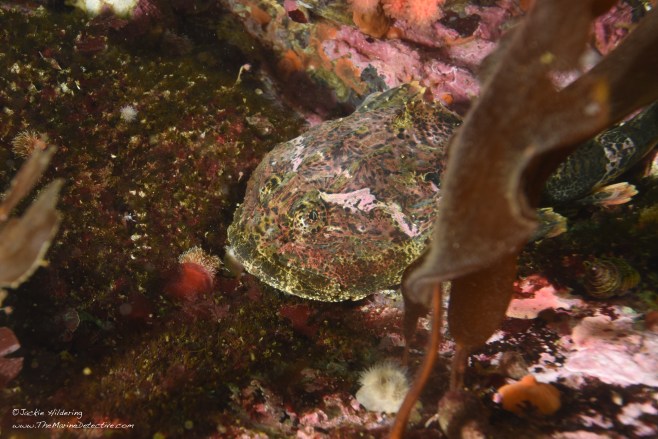
Yes, this is a fish, not a rock with eyes.
There is so little understanding about how species like this can change their colour as they do.
It won’t surprise you that the most research is done on “commercially important” species with regards to stock management. Males also guard the fertilized eggs in this species. See my blog “Buffalos Mating Underwater” at this link for photos showing the diversity of colour / camouflage and for photos of the eggs.
Buffalo Sculpin = Enophrys bison to 37 cm long.
Fish #5
Red Irish Lord
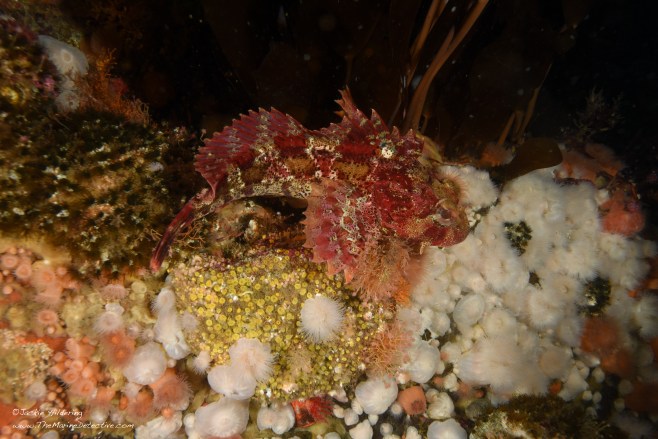
I must have disturbed this Red Irish Lord with my bubbles for him/ her to be easily visible like this. They are usually fully camouflaged.
Note the shell the Red Irish Lord is on. This is a Giant Rock Scallop whose shell has been drilled into by Boring Sponge. Astounding isn’t it to think that Giant Rock Scallops (Crassadoma gigantea to 25 cm across) start off as plankton; are free-swimming to ~2.5 cm; and then attach to the bottom with their right side and can grow to 25 cm. They may live as long as 50 years but there have been problems with human over-harvesting.
Red Irish Lord parents take turns caring for their fertilized eggs (Hemilepidotus hemilepidotus; up to 51 cm).
Please see my blog “In the Eye of the Lord – the Red Irish Lord That Is” at this link.
Lingcod = Hemilepidotus hemilepidotus, to 51 cm long.
And the final photo and thoughts for you dear reader:
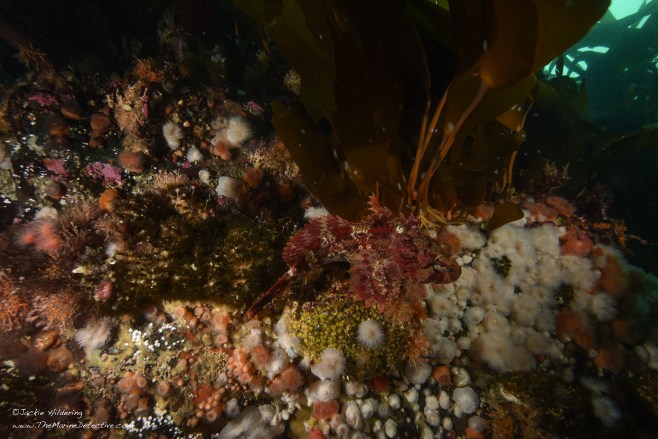
Same Red Irish Lord as in the photo above.
Under the canopy, beams of light shimmering through as they would in a forest of trees, bringing energy to the algae which feed the depths. This is all at only 5m depth. This is life you could imagine when you close your eyes and think of the dark sea off our coast. This is the world where Humpbacks feed, where families of Orca follow the same lineages of Chinook Salmon generation after generation, where species exist without our knowledge let alone our respect. This is their world. This is the world to which all life on earth is connected.
Five fish. One dive. A world connected.



